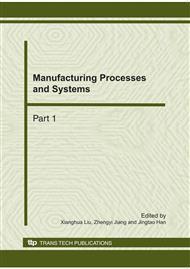p.1171
p.1177
p.1182
p.1188
p.1192
p.1199
p.1204
p.1208
p.1212
Molecularly Imprinted Polymer Microspheres Prepared by Precipitation Polymerization for Atenolol Recognition
Abstract:
Molecularly imprinted polymer microspheres for selective binding and recognition of atenolol were prepared by means of precipitation polymerization method using methacylic acid as functional monomer and trimethylolpropane trimethacrylate as cross-linker in the presence of atenolol as template molecule in acetonitrile solution. Computer simulation was employed to demonstrate the mechanism of the interaction between methacylic acid and atenolol. The scanning electron microscopy exhibited that the polymers were uniform spheres with the diameter of about 0.6µm. The adsorption properties of atenolol for imprinted microspheres were evaluated by equilibrium rebinding experiments. Scatchard plot analysis revealed that there were two classes of binding sites in the imprinted microspheres. The dissociation constant and the apparent maximum binding capacity were 4.56×10-4mol/L and 186.46μmol/g for the high affinity binding sites, 2.40×10-2mol/L and 4.01mmol/g for the low affinity binding sites. Compared to the structrally analogues, the imprinted microspheres exhibited a high selective reconizable capacity towards the template.
Info:
Periodical:
Pages:
1192-1198
Citation:
Online since:
October 2010
Authors:
Price:
Сopyright:
© 2011 Trans Tech Publications Ltd. All Rights Reserved
Share:
Citation:


